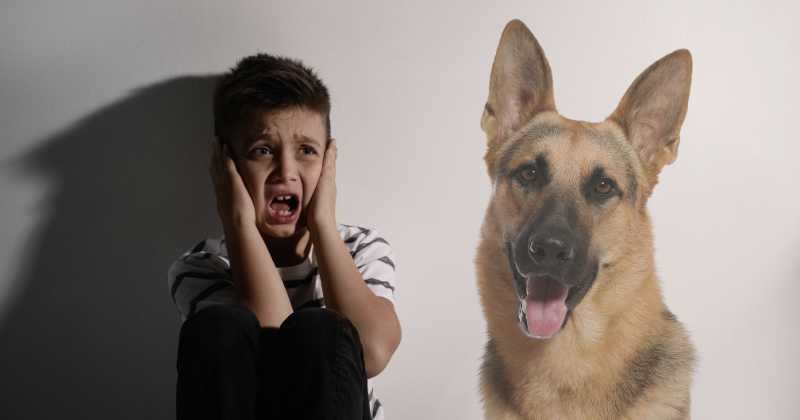Dogs – man’s best friend? Not always. For some people, the wagging tails and playful barks trigger a very real and debilitating fear: Cynophobia, the clinical term for the excessive and persistent fear of dogs. It’s more than just a dislike or apprehension; cynophobia can have a significant impact on a person’s daily life, causing anxiety, panic attacks, and even avoidance of situations where they might encounter dogs.
Unleashing the Causes
So, what unleashes this fear? The origins of cynophobia can be complex and varied, often stemming from a combination of factors:

- Negative or traumatic experiences: A bad experience with a dog, like being bitten or chased, can be a major trigger for cynophobia. Even witnessing someone else have a negative experience with a dog can be enough to spark the fear.
- Genetics and family history: Research suggests that there may be a genetic component to phobias, including cynophobia. If you have family members with phobias, you may be more likely to develop one yourself.
- Environmental factors: Certain personality traits, such as anxiety or neuroticism, may make you more susceptible to developing phobias. Additionally, cultural factors can play a role, as some cultures have negative associations with dogs.
The Grip of Fear
Cynophobia is more than just a simple fear. It’s a full-blown phobia that can manifest in a variety of physical and emotional symptoms, including:

- Anxiety and panic attacks: When faced with a dog, a person with cynophobia may experience intense anxiety, heart palpitations, shortness of breath, and even panic attacks.
- Avoidance: To avoid experiencing these symptoms, people with cynophobia may go to great lengths to avoid dogs. This can mean avoiding dog parks, walking routes they know dogs frequent, or even visiting friends and family who own dogs.
- Physical symptoms: In some cases, cynophobia can also cause physical symptoms like sweating, nausea, and dizziness.
Breaking Free from the Leash
The good news is that cynophobia is a treatable condition. With the help of a therapist, there are a number of effective treatments available, including:
- Exposure therapy: This type of therapy gradually exposes the person to dogs in a safe and controlled environment. Over time, the person learns to manage their anxiety and overcome their fear.
- Cognitive-behavioral therapy (CBT): CBT helps the person identify and change negative thought patterns associated with dogs.
- Relaxation techniques: Techniques like deep breathing and meditation can help to manage anxiety and reduce the physical symptoms of fear.
Living with a Wagging Tail in Your Heart

Living with cynophobia can be challenging, but it’s important to remember that you’re not alone. Millions of people around the world struggle with phobias, and there is help available. With treatment, it is possible to overcome your fear of dogs and enjoy the many benefits of canine companionship.
So, if you find yourself cowering at the sight of a wagging tail, remember that there’s hope. Take the first step towards a life free from fear and unleash the potential for a friendship with man’s (or woman’s) best friend.
Also read : 15 Kinds Of Strange Phobias People Have In Their Life
Remember, knowledge is power, and by understanding cynophobia, we can work together to create a world where everyone can enjoy the unconditional love and companionship of a dog. Let’s break free from the leash of fear and embrace the joy of furry friendships!
I hope this article has helped you understand cynophobia better. If you have any questions or concerns, please feel free to reach out to a qualified mental health professional.


